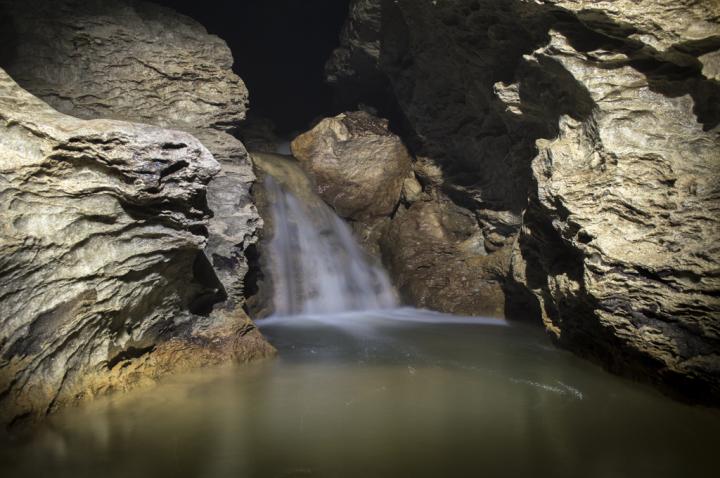
Credit: University of South Florida
The Monte Conca cave system on the island of Sicily is a vast system of springs and pools, sitting below a nature preserve. It might be presumed to be one of the few places untouched by human-driven pollution.
But new research published by a USF microbiology and geoscience team has found that even below ground, the microbial communities in the pools of water in the Monte Conca cave show signs of being altered by pollution from above.
Publishing in the prestigious journal, PLoS One, the team found that water flowing through the vast cave system produced changes in the microbial communities between the wet and dry seasons, with the microbial communities differing in bacterial composition and ecological functions. The study suggests that as surface water flows through agricultural and urban areas, it collects bacterial contaminants before entering cave systems.
The purpose of the study was to determine the impact surface runoff has on cave microbial communities using the Monte Conca spring pool as a model. The long-term impacts of these surface-derived bacterial contaminants or their impact on groundwater sources is currently not well known, said lead author Dr. Madison Davis of USF’s Department of Cell Biology, Microbiology and Molecular Biology.
The project was led by USF Professor James Garey of the Department of Cell Biology, Microbiology and Molecular Biology, and Professor Bogdan P. Onac of USF’s School of Geosciences. USF graduate and undergraduate students Madison C. Davis, Melvin D. Baker IV, Christiana K. S. Mayne, Chelsea M. Dinon and Christina J. Moss are co-authors on the paper.
The group collaborated with Italian colleagues Maria A. Messina, Giuseppe Nicolosi and Salvatore Petralia of Centro Speleologico Etneoa.
The scientists found that the dry season microbial community was dominated by sulfur-oxidizing bacteria because of their ability to utilize oxygen from the cave and hydrogen sulfide from the spring pool. After a heavy rainfall, the sulfur-oxidizing community was displaced by surface-derived bacteria that were primarily identified as human contaminants, including Escherichia coli and other fecal bacteria.
Caves like Monte Conca – which is Sicily’s longest and deepest gypsum karst system and was formed by sulfuric acid dissolution – have been identified worldwide. To carry out their work, researchers traveled into the cave system to retrieve samples in four missions spanning 2015 and 2016.
Sulfur oxidizers comprised more than 90 percent of the microbial community during the dry season and were replaced by potential human-influenced contaminants such as Escherichia and Lysinibacillus species after heavy rains, the researchers said. One sampling appeared to show a transition between the wet and dry seasons when potential man-made contaminants, sulfur-oxidizing bacteria and nitrogen-fixing bacteria all were present within the spring pool.
The study demonstrates the impact of surface runoff on the microbial community structure and function of endemic cave communities, the researchers said.
###
Media Contact
Tina Meketa
[email protected]
Original Source
http://spark.




